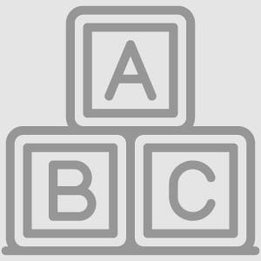Vocabulary
What is it?
In 2000, The National Reading Panel identified vocabulary (along with phonemic awareness, phonics, fluency and comprehension) as one of the ‘big five’ crucial components for effective reading teaching.
Understanding what has been read is at the heart of reading comprehension. When children do not know enough of the words in a text, they will understand less. Having sufficient vocabulary knowledge is therefore essential to being a good reader.
Having a good vocabulary means knowing a large number of words in depth, being able to build connections between words and understanding which words to use in specific circumstances. A good vocabulary is built upon rich knowledge of words, their definitions, relationships to other words and how to use those words to create different effects depending upon the circumstance in which they are used.
Traditionally, vocabulary was acquired through wide reading of rich text. This remains a significant way to build word knowledge but direct instruction about words and their meanings is now recognised as a highly effective approach to teaching vocabulary.
The tiered approach to vocabulary teaching developed by Beck, McKeown and Kucan is a robust and systematic process for teaching vocabulary. The approach divides language into three tiers:
- Tier 1: basic words that tend to appear in oral conversations (e.g., table, people, happy)
- Tier 2: words with utility that can be used in multiple contexts and are characteristic of written communication (e.g., merchant, required, examine)
- Tier 3: rare words, technical words or words that tend to be used in specific domains such as science of mathematical words (e.g. metaphor, filibuster, photosynthesis)
What does the research show?
Biemiller (2003) found that there was a cumulative effect in the number of words learnt by children in school. Those children who entered school with the fewest root words in their vocabularies gained new vocabulary at a far slower rate than their peers who started school with larger vocabularies. This meant that the word gap between these children grew year on year.
“… the size of a child’s vocabulary is the best predictor of success on future tests and children with a poor vocabulary at five are four times more likely to struggle with reading in adulthood and three times more likely to have mental health issues”. (Law, J., Charlton, J., Asmussen, K. (2017). Language as a Child Wellbeing Indicator. Early Intervention Foundation/Newcastle University) Sourced from Why Closing the Word Gap Matters, Oxford University Press, 2019.
Specific vocabulary instruction can have a positive effect on children’s reading comprehension. (Stahl and Fairbanks, The Effects of Vocabulary Instruction: A Model-based Meta-analysis, Review of Educational Research Spring, 1986, Vol 56, No 1 pp72-110).
There is a broad consensus that vocabulary can be taught effectively in schools and that a range of approaches used together is most effective. (Duke and Moses, 2003).
The findings of studies that examined robust instruction has shown it to be effective, not only for learning the meanings of words but also for affecting reading comprehension. (Beck et al., 1982, McKeown, Beck, Omanson, & Perfetti, 1983; McKeown, Beck Omanson, & Pople, 1985) – In Bringing Words to Life Beck, Mckeown & Kucan, Second Edition 2013.

